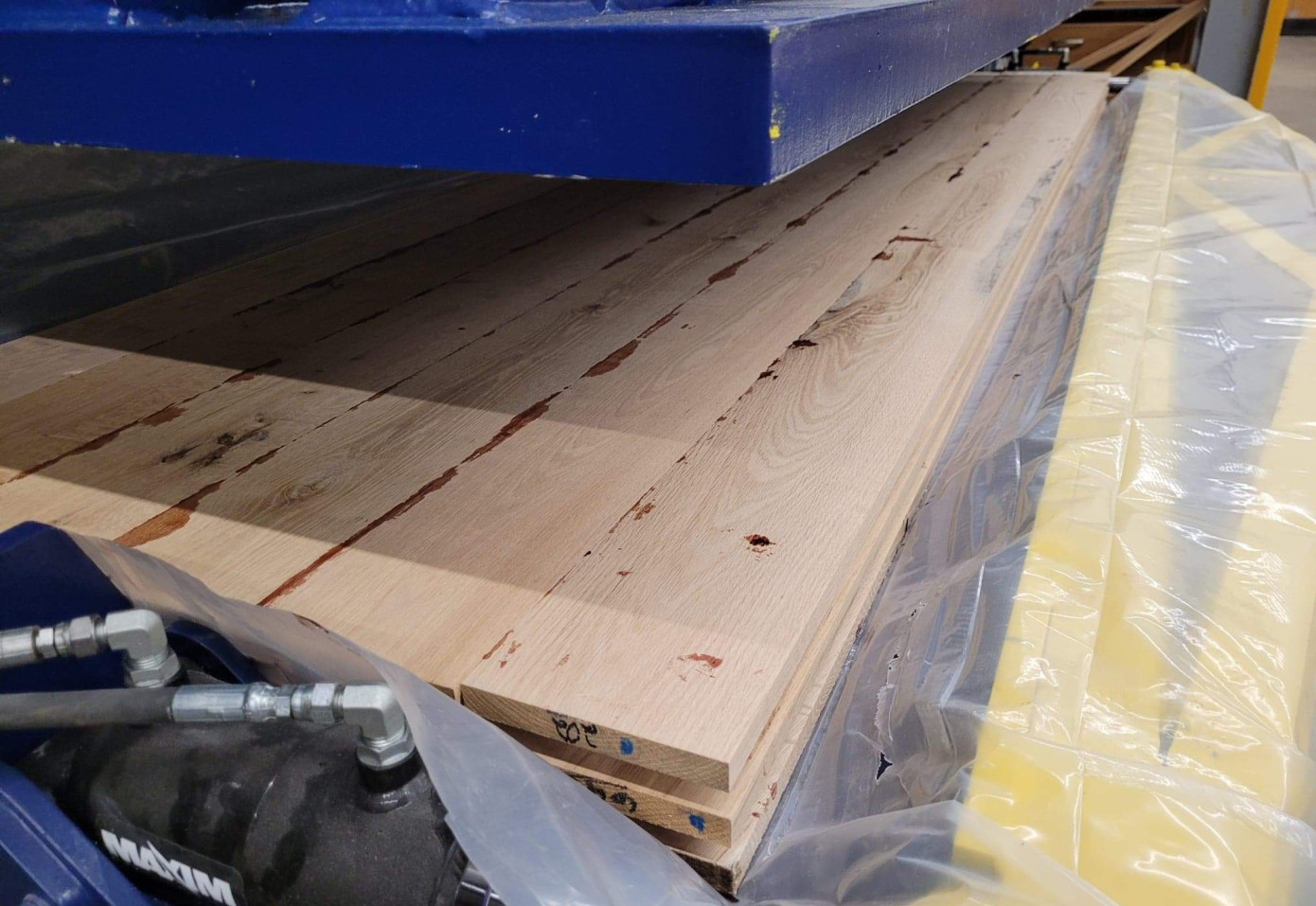In a study, researchers at West Virginia University (WVU) have unveiled a promising solution to utilize low-quality hardwoods in structural applications. Led by Professor Joseph McNeel, the team at the WVU Appalachian Hardwood Center has explored the effectiveness of yellow poplar, an abundant West Virginia species, as a source of engineered wood building material. Their findings suggest that this overlooked hardwood could serve as an affordable and sustainable alternative to conventional materials such as softwood, steel, and concrete.
The appeal of yellow poplar lies in its straight growth, minimal limbs, and easy processing, making it well-suited for construction purposes. Currently, approximately half of the hardwood harvested for sawtimber in West Virginia is considered low-quality lumber due to defects like knots. Such lumber is typically used for low-value items such as pallets, boxes, and flooring. However, Professor McNeel believes that these low-quality hardwoods possess untapped potential for value-added applications.
By employing a technique of cross-laminated timber (CLT), the researchers have demonstrated that yellow poplar can be transformed into durable, load-bearing panels. Unlike traditional lumber, CLT are composed of multiple glued and pressed layers, providing strength and resilience. While softwoods like spruce, fir, and pine are commonly used for CLT, McNeel's team has shown that certain Appalachian hardwoods, including yellow poplar, exhibit excellent structural properties.
The WVU researchers have successfully manufactured CLT panels comprising three, five, and seven layers using a specialized press capable of applying 250 pounds of pressure per square inch. Rigorous testing has been conducted to assess the panels' bending and breaking strength, as well as their performance under extreme conditions such as water saturation and dehydration. Multiple tests have confirmed the reliability of the glue bonds, indicating that yellow poplar CLTs can meet the demands of construction applications.
However, before yellow poplar CLT can be widely adopted in commercial construction, the researchers aim to obtain acceptance from the American Panel Association as a permissible raw material. This would pave the way for CLT manufacturing companies to utilize yellow poplar in their processes. The use of yellow poplar CLT not only benefits the construction industry but also holds promise for the forest product companies across Appalachia, as it allows them to transform low-value hardwood into high-value construction materials.
While the potential of CLT in the construction industry is evident, their production and transportation pose logistical challenges. CLT panels are large and heavy, with a single 3-foot-by-10-foot panel weighing between 600 and 700 pounds. Therefore, McNeel emphasizes the importance of establishing hardwood manufacturing facilities in close proximity to the market to reduce transportation costs.
In addition to their economic benefits, CLT hold potential for addressing crises and humanitarian efforts. McNeel suggests that these panels could be quickly assembled by organizations like FEMA to provide emergency housing in times of need. The applications of CLT extend far beyond traditional construction, and the researchers believe they have merely scratched the surface of their potential uses.
The research team, consisting of Professor McNeel and his colleagues Curt Hassler, Balazs Bencsik, Jon Norris, and Levente Denes, is also exploring the use of red oak, another Appalachian hardwood, in the construction of timber mats. These mats are employed to support heavy-duty equipment on sensitive sites where soil degradation is a concern. If successful, the introduction of CLT technology for timber mat production could open up new opportunities for Appalachian hardwood lumber mills.
Professor McNeel remains optimistic about the potential applications of CLTs, emphasizing that their current research represents only the tip of the iceberg. The team's groundbreaking findings have the potential to revolutionize the construction industry, offering an environmentally friendly and cost-effective solution to meet the growing demand for sustainable building materials.
